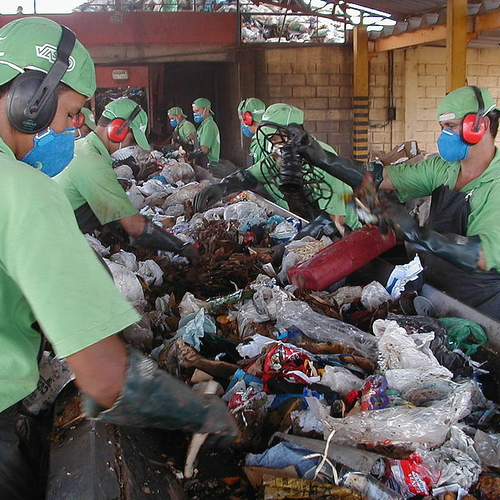
Image Credit: LG Eden Collection
I was up at Scott Farm here in Vermont last week for my company’s summer picnic. This week’s sun may have burned away the pain of the last few weeks, but the rain last week, and many other recent weeks, has been unstoppable. Just when you thought you had a few minutes to play horseshoes in the drizzle, the full-scale rain was back, sending you back under the eaves with your drink and your Frisbee (yes, that’s Frisbee horseshoes).
Parts of the 1999 movie “The Cider House Rules” were filmed at Scott Farm, and if you’ve seen the vistas there, you can see why someone would want to put them in a movie. Sometimes Hollywood likes to enhance what is already picturesque, and aside from wiring apples to trees so that they could be picked again in the following day’s takes, the best example of this is one of the barns, which had been in good shape but was painted by the set crew to appear in need of a paint job. A mixture of gray and white paint simulates weathered barn boards with flaking paint.
Today the barn really is ready for a new coat of paint, and David Tansey, who manages Scott Farm for the Landmark Trust, is trying to decide how to best do that. What kind of paint job best honors the barn’s history? Is recycling always a good thing? These are both questions that are worth talking about!
Recycled is good… right?
As I wrote last week, sometimes you have to look beyond superficial marketing messages to decide if a product really is “green.” Recycling is a good example of that. When a product, whether it’s a soda bottle, a ream of paper, or a piece of insulation, advertises that it contains recycled content, that’s good — right?
“Recycling = Good” is a sensible rule of thumb, but your actual mileage will vary. Using recycled content is generally an improvement over “virgin” material, particularly for metals — but watch the environmental impact.
For example, according to the Inventory of Carbon and Energy project (ICE) at the University of Bath in England, the average “embodied carbon” of new aluminum is 12.79 kilograms of carbon dioxide (or equivalent) per kilogram of material, while that of recycled aluminum is 1.81. ICE’s carbon rating for new glass is 0.91, while recycled glass is 0.59.
So generally, and with these examples, recycled material has lower environmental impact. It’s possible, however, that either in a specific stream of materials, or in a specific material type, that the environmental impact of collecting, recycling, and reprocessing would be greater than the impact of collecting and processing a virgin material or an alternative material. In that case, the rule of thumb wouldn’t hold.
Sometimes recycled content doesn’t matter
Next question: is a product that has recycled content “greener” than a similar product that does not have recycled content? Let’s consider a new muffler on a car, which has steel and other metals.
A muffler that is marketed as “green” because of its recycled content is a silly proposition (one that I fortunately have not seen), for a couple reasons. One, high recycled content is the norm for steel, and so a muffler with a lot of recycled content, while a good thing, is status quo. It’s cheaper to recycle steel than manufacture virgin steel, and if total demand weren’t higher than what the recycled market could provide, steel could be pretty close to a closed-loop system. Having a preference as a buyer for recycled steel doesn’t create more recycled steel in the system — it’s already maxed out.
Recycling is also one of many single-attribute claims that may or may not reflect the key issues for a product type. It’s time to take a broader “life-cycle” perspective when determining what to call green. With a muffler, the most important thing is that it performs well for as long as possible, reducing noise and pollution on our streets. No one would want a “green” muffler that didn’t perform well.
Don’t use aluminum … and if you do, recycle it
One clear lesson from what we know about metals and energy is this: don’t use aluminum when there are good alternatives.
Recycled aluminum has drastically lower environmental impact than virgin aluminum (about one-sixth, as stated above) — so it seems like a no-brainer that recycled is the environmentally friendly choice over virgin. However, with aluminum, worldwide demand is so strong that there isn’t enough recycled material to go around. Buying something with aluminum, even if it’s recycled, only increases overall aluminum demand.
Once that aluminum is out there, only 42% of it will end up back in the recycling loop. If you really need aluminum for whatever it is you’re doing, choose recycled, but if the incredible properties of aluminum aren’t vital for the product, another material may be a greener alternative. And once you use an aluminum product, recycle it!
If recycled content is the best thing about a product, be suspicious
Recycled content is usually green, but be suspicious if that is the best thing that the manufacturer could think of to highlight on the package. Depending on the type of product, you should also look for energy efficiency (any appliances, light bulbs, cars, etc.), emissions (paints, furnishings, countertops), sustainability certifications (wood products), and numerous other attributes.
Parting insight: Our process for listing products in GBA’s GreenSpec guide incorporates just the kind of approach we’re talking about here — looking beyond a single attribute. Our list of recycled-content products is best-in-class green from a broader perspective than one single attribute.
Tristan Roberts is Editorial Director at BuildingGreen, Inc., in Brattleboro, Vermont, which publishes information on green building solutions. You can learn more at www.BuildingGreen.com. Jennifer Atlee at BuildingGreen also contributed to this week’s column.
Weekly Newsletter
Get building science and energy efficiency advice, plus special offers, in your inbox.














3 Comments
Fly Ash Woes and recycled rubbish
I would add that a VERY common recycled material in supposedly "green" materials is coal ash. There is no doubt, these products contains toxic, heavy metals (Mercury, Lead, Cadmium, etc) that result from coal combustion. Building products (carpet, concrete, drywall, acoustic ceiling tiles, floor tile...) are being consistently chocked full of these toxic by-products from coal combustion, and they are being passed off upon us as healthy, green alternatives. Now, there is a lot of debate about whether containing this coal ash in materials is better than dumping it or storing it in other manners, and there is also plenty of debate about the containment/encapsulation qualities of the materials that coal ash is incorporated into--for example, maybe, MAYBE, coal ash in concrete is fully encapsulated and does not dust off or leach into our built environments. Long story short, we are ADDING toxic heavy metals to our building products in the name of sustainability and "green". These "recycled" materials are merely the result of irresponsible coal combustion, and I believe that in some ways, using these products is providing a subsidy for dirty coal. Feel free to disagree, but people should know about this....particularly when they are doing insane-seeming things (to me), like using fly-ash concrete in kitchen counter tops! That one really gets me! Thanks for the post Tristan and Alex!
Recycled Wood Products
When comparing building materials, it is important to look beneath the surface. There are companies which sell layered flooring and call it recycled with the top layer being recycled and the bottom layers being virgin timber.
recycled teak
William, do you have a connection with this company?
From the website, it looks like the teak flooring is reclaimed, not recycled. Is that correct? Big difference, in my book. Where is it reclaimed from, and is it done so responsibly?
Log in or create an account to post a comment.
Sign up Log in